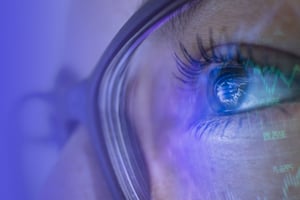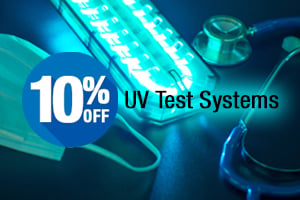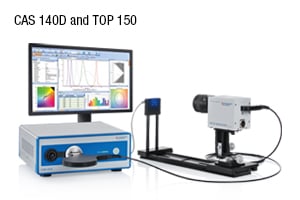July 2020
|
|||||||||||||||||||||||||||||||||||||||||||||||||||||||||||||||||||||||||||||||||||||||||||||||||||||||||||||||||||||||||||||||||||||||||||||||||||||||||||||||||||||||||||||||||||||||||||||||||||||||||||||||||||||||||||||||||||||||||||||||||||||||||||||||||||||||||||||||||||||||||||||||||||||||||||||||||||||||||||||||||||||||||||||||||||||||||||||||||||||||||||||||||||||||||||||||||||||||||||||||||||||||||||||||||||||||||||||||||||||||||||||||||||||||||||||||||||||||||||||||||||||||||||||||||||||||||||||||||||||||||||||||||||||||||||||||||||||||||||||||||||||||||||||||||||||||||||||||||||||||||||||||||||||||||||||||||||||||||||||||||||||||||||||||||||||||||||||||||||||||||||||||||||||||||||||||||||||||||||||||||||||||||||||||||||||||||||||||||||||||||||||||||||||||||||
Using UV Light to Kill Bacteria
The use of light to kill bacteria or “superbug” (bacteria that is resistant to most antibiotics) is not a new phenomenon and has been around since 1878. Arthur Downes and Thomas P. Blunt published a paper in 1878 on the properties of short wavelength light and its role in sterilization of bacteria. Later In 1903, Niels Finsen was awarded the Nobel Prize for Medicine for his use of UV for the treatment of the disease lupus vulgaris.
Over the years, despite the imposed limitations and environmental concerns with mercury, the best choice for these disinfection lights were often UV mercury lamps. Consequently, the demand for lower cost options that consumed less energy and without mercury evolved- the UV LED. UV LEDs (light emitting diodes) can produce wavelengths with a peak between 260 nm and 270 nm. This provides a powerful enough germicidal wavelength to be used as a disinfectant. Industries focused on air and water pollution, including the medical field find much use for these UV LEDs. The UVC disinfection is a physical process that disrupts the DNA of harmful microorganisms and destroys their ability to reproduce. It is important to note that this method does not help those people who are already infected by a virus but rather, helps in reducing the ability for the virus to reproduce itself on surfaces, reducing the spread of contamination. It is not a replacement for traditional cleaning and chemical disinfection protocols (wiping down a medical device or piece of medical equipment). As an effective solution for disinfection, UVC LEDs give medical equipment and device manufacturers the opportunity to assist their end-users with infection control and to create safer healthcare settings.
Today we see this UVC ‘blue light’ being used in disinfecting, subways, buses, banks disinfecting money, and used by robots for cleaning hospital floors. In addition, many companies are also manufacturing portable UVC lights that decontaminate areas frequently exposed to viruses. These handheld instruments can be especially useful in vehicles used by hospitals, EMS, police, and fire departments to assist in sterilizing their vehicles.
Most recently observed, is the impressive short turnaround time in development of these disinfection robots and instruments. Specialist in the advanced manufacturing automation department at the Siemens Corporation located in China, helped produce a disinfection robot model using hydrogen peroxide vapor (HPV) and ultraviolet (UV) light and had it in production in only one week’s time. These robots are used in hospitals, government buildings, and health locations worldwide.
As commendable as this UVC ray is in killing viruses, it is equally important to remember and be aware of the extremely harmful effects it can have on the human skin and retina. Because of this danger, many industries now use an artificial replication of UVC to better control its usage as a disinfectant method. This controlled method is Ultraviolet germicidal irradiation (UVGI). Ultraviolet germicidal irradiation (UVGI) is a disinfection method or process that uses short-wavelength ultraviolet (UV-C) light to kill microorganisms.
Today, the University of Nebraska uses the UVGI method in a controlled environment. With the dangerous shortages of personal protective equipment, the ability to use and reuse protective gear often becomes a real need. Recently, the University of Nebraska addressed this need with the development of a N95 Filtering Facemask Respirator Ultraviolet Germicidal Irradiation (UVGI) process for use in decontamination and reuse. They created a process to disinfect protective masks using ultraviolet germicidal irradiation (UVGI).
As development and use of UVC and UVGI are becoming more readily available, such is the need for testing used to confirm the safety and accurate measurements of these instruments.
Konica Minolta Sensing Americas has been providing resources and instruments for many years as well as setting UV LED calibration standards and addressing the hazards of blue light through our various testing processes. Konica Minolta Sensing provides an all-in-one system for determining various measurement quantities and tools to verify measurement results. To learn more about our UV measurement instruments visit us at https://sensing.konicaminolta.us/us/technologies/uv-led-measurement/
Sources:
https://www.linkedin.com/pulse/corona-changing-industrial-world-how-digitalization-helping-helmrich/?articleId=6670717392777207808#comments-66707173927772
“Corona is changing the industrial world – how digitalization and automation are helping make production future-proof” by Klaus Helmrich Member of the Managing Board of Siemens AG and CEO Digital Industries
www.nebraskamed.com “N95 Filtering Facepiece Respirator Ultraviolet Germicidal Irradiation (UVGI) Process for Decontamination and Reuse
Downes, Arthur; Blunt, Thomas P. (19 December 1878). "On the Influence of Light upon Protoplasm". Proceedings of the Royal Society of London. 28 (190–195): 199–212. Bibcode:1878RSPS...28..199D. doi:10.1098/rspl.1878.0109.
"The Nobel Prize in Physiology or Medicine 1903". Nobelprize.org. The Nobel Foundation. Retrieved 2006-09-09.
Blue Light Safety
Discussions in lighting safety standards has become a growing topic of conversation as we see the significant increase of modern solid-state lighting (SSL) light sources and UVC “blue light” in our daily environment.
One specific concern is that of photobiological safety and its direct correlation to blue light hazard (BLH). Blue light between 400 nm and 500 nm causes photochemical damage to the retina and may lead to degeneration of the macula. The current international Standard IEC 62471 contains guidelines for evaluating the photobiological safety of lamps and lamp systems. To ensure reliable evaluation, it places high demands on measuring equipment and procedures.
Konica Minolta Sensing and Instrument System provide measurement systems that can help determine the Blue Light Hazard risk of LED light sources and luminaires between 300 nm and 700 nm (i.e. only partially in the UV spectrum). LEDs are classified by the international Technological Standards IEC 62471 for photobiological safety – the respective risk classes range from 0 (exempt) to 3 (high risk).
Konica Minolta Sensing and Instrument Systems offers two different Blue Light Hazard measurement systems, both based on our CAS 140D with stray light correction, covering the spectral range from 300 nm to 700 nm. The stray light corrected CAS 140D Instrument Systems is the first to offer an array spectrometer that can reliably assess the blue light hazard from light sources within the prescribed limiting values. Prior, only double monochromators were recommended for this task, as an underestimation of the blue light hazard was possible in measurements with a spectroradiometer on array spectrometer basis due to stray light. The CAS 140D avoids this in two ways: The optics and mechanics used in the spectrograph block are optimized with regard to disturbing stray light. Additionally, a unique stray light correction matrix is integrated in the calibration procedure. Both innovations combined ensure an up to now unachieved precision in the determination of the blue light hazard with an array spectrometer.
Konica Minolta Sensing Americas has been providing resources and instruments for many years as well as setting UV LED calibration standards and addressing the hazards of blue light through our various testing processes. To learn more about our UV measurement instruments visit us at https://sensing.konicaminolta.us/us/technologies/uv-led-measurement/
June 2020
|
||||||||||||||||||||||||||||||||||||||||||||||||||||||||||||||||||||||||||||||||||||||||||||||||||||||||||||||||||||||||||||||||||||||||||||||||||||||||||||||||||||||||||||||||||||||||||||||||||||||||||||||||||||||||||||||||||||||||||||||||||||||||||||||||||||||||||||||||||||||||||||||||||||||||||||||||||||||||||||||||||||||||||||||||||||||||||||||||||||||||||||||||||||||||||||||||||||||||||||||||||||||||||||||||||||||||||||||||||||||||||||||||||||||||||||||||||||||||||||||||||||||||||||||||||||||||||||||||||||||||||||||||||||||||||||||||||||||||||||||||||||||||||||||||||||||||||||||||||||||||||||||||||||||||||||||||||||||||||||||||||||||||||||||||||||||||||||||||||||||||||||||||||||||||||||||||||||||||||||||||||||||||||||||||||||||||||||||||||||||||||||||||||||||||||||||||||||||||||||||||||||||||||||||||||||||||||||||||||||||||
Ultraviolet Rays as a Method of Disinfection
Many researchers and companies are investigating the use of UVC to serve as a method of disinfecting items exposed to a virus. Researchers need instruments that can aid in the development of these technologies and help accurately measure the results of their findings.
May 2020
|
||||||||||||||||||||||||||||||||||||||||||||||||||||||||||||||||||||||||||||||||||||||||||||||||||||||||||||||||||||||||||||||||||||||||||||||||||||||||||||||||||||||||||||||||||||||||||||||||||||||||||||||||||||||||||||||||||||||||||||||||||||||||||||||||||||||||||||||||||||||||||||||||||||||||||||||||||||||||||||||||||||||||||||||||||||||||||||||||||||||||||||||||||||||||||||||||||||||||||||||||||||||||||||||||||||||||||||||||||||||||||||||||||||||||||||||||||||||||||||||||||||||||||||||||||||||||||||||||||||||||||||||||||||||||||||||||||||||||||||||||||||||||||||||||||||||||||||||||||||||||||||||||||||||||||||||||||||||||||||||||||||||||||||||||||||||||||||||||||||||||||||||||||||||||||||||||||||||||||||||||||||||||||||||||||||||||||||||||||||||||||||||||||||||||||||||||||||||||||||||||||||||||||||||||||||||||||||||||||||||||
February 2020
|
||||||||||||||||||||||||||||||||||||||||||||||||||||||||||||||||||||||||||||||||||||||||||||||||||||||||||||||||||||||||||||||||||||||||||||||||||||||||||||||||||||||||||||||||||||||||||||||||||||||||||||||||||||||||||||||||||||||||||||||||||||||||||||||||||||||||||||||||||||||||||||||||||||||||||||||||||||||||||||||||||||||||||||||||||||||||||||||||||||||||||||||||||||||||||||||||||||||||||||||||||||||||||||||||||||||||||||||||||||||||||||||||||||||||||||||||||||||||||||||||||||||||||||||||||||||||||||||||||||||||||||||||||||||||||||||||||||||||||||||||||||||||||||||||||||||||||||||||||||||||||||||||||||||||||||||||||||||||||||||||||||||||||||||||||||||||||||||||||||||||||||||||||||||||||||||||||||||||||||||||||||||||||||||||||||||||||||||||||||||||||||||||||||||||||||||||||||||||||||||||||||||||||||||||||||||||||||||||||||||||||||||||||||||||||||||||||||||||||||||||||||||||||||||||||||||||||||||||||||||||||||||||||||
Importance of Display Contrast Measurement in Cockpit Instrumentation

Cockpit instrumentation in the aerospace industry has evolved over the past decades. In the past, control panels had backlit gauges, switches, and knobs, whereas now, you are more likely to see an array of flat panel screens. There must be consistent light and color emitting from these panels to reduce eyestrain, ease the interpretation of data, and decrease distractions. In addition, they are comfortable to view equally in daylight and as well as at night. Two key measurements are Luminance (a measure of brightness) and Display Contrast (the ratio between light and dark).
Luminance (Brightness) is a photometric measure of the luminous intensity per unit area of light traveling in a given direction. Brightness is defined as the luminance of the brightest component (white color) and measured in candela per square meter (cd/m2 = nit) or foot-lamberts (1fL=3.426 nits). Typically, display luminance varies from 100 nits in most office monitors up to 1000 nits in front projection systems.
There are varieties of units used for luminance. In most countries, the most common unit for luminance is candela/square meter (cd/m2). However, in the U.S., the most common unit is the foot-lambert (fL); 1 foot-lambert (fL) equals 1/π candela/square foot, or 3.426 cd/m2. Professionals in the industry often use the term nit (nt). 1 nit unit is equivalent to 1 cd/m2.
You can use a luminance meter such as the LS-150 or LS-160 to measure luminance.
Display Contrast is the ratio between the brightest colors (in most cases white) and the darkest color (in most cases black) that the monitor can produce. Where there is no industry standard in measuring contrast, the generally accepted process is to measure parts of a screen and either take the average or highest white and the average or lowest black and express it in ratio form bright:dark. For example, if a screen has a bright luminance of 150 nits and a dark luminance of 1 nit, the contrast ratio would be 150:1.
With newer high performance, OLEDs with darker blacks produce much wider ratios. Hence, if a monitor can output 7500 nits with a white screen and 0.010 nits with a black screen, it would have a contrast ratio of 750,000:1. A higher contrast produces more in-depth images with better screen quality, giving richer colors that make it easier to interpret images and data. A decent LCD screen might have a contrast ratio of 1,000:1. The contrast on an OLED display is far higher, at around 4000:1, with ultra-high-end units beginning to get close to 1,000,000:1. When an OLED screen shows black, its pixels produce almost no light whatsoever.
A display’s contrast ratio is one of the most important performance measurements. In addition, it will be the most noticeable difference between the two displays in a side-by-side comparison.
A spectroradiometer such as one from the CS-3000 series is best for measuring contrast. With high-end spectroradiometers, can read luminance levels as low as 0.0001 cd/m2 when used @ 1 degree setting and read highest luminance level 10,000,000 cd/m2 when used @ 0.1 degree setting.
December/January 2020
|
||||||||||||||||||||||||||||||||||||||||||||||||||||||||||||||||||||||||||||||||||||||||||||||||||||||||||||||||||||||||||||||||||||||||||||||||||||||||||||||||||||||||||||||||||||||||||||||||||||||||||||||||||||||||||||||||||||||||||||||||||||||||||||||||||||||||||||||||||||||||||||||||||||||||||||||||||||||||||||||||||||||||||||||||||||||||||||||||||||||||||||||||||||||||||||||||||||||||||||||||||||||||||||||||||||||||||||||||||||||||||||||||||||||||||||||||||||||||||||||||||||||||||||||||||||||||||||||||||||||||||||||||||||||||||||||||||||||||||||||||||||||||||||||||||||||||||||||||||||||||||||||||||||||||||||||||||||||||||||||||||||||||||||||||||||||||||||||||||||||||||||||||||||||||||||||||||||||||||||||||||||||||||||||||||||||||||||||||||||||||||||||||||||||||||||||||||||||||||||||||||||||||||||||||||||||||||||||||||||||||||||||||||||||||||||||||||||||||||||||||||||||||||||||||||||||||||||||||||||||||||||||||||||
October 2019
|
||||||||||||||||||||||||||||||||||||||||||||||||||||||||||||||||||||||||||||||||||||||||||||||||||||||||||||||||||||||||||||||||||||||||||||||||||||||||||||||||||||||||||||||||||||||||||||||||||||||||||||||||||||||||||||||||||||||||||||||||||||||||||||||||||||||||||||||||||||||||||||||||||||||||||||||||||||||||||||||||||||||||||||||||||||||||||||||||||||||||||||||||||||||||||||||||||||||||||||||||||||||||||||||||||||||||||||||||||||||||||||||||||||||||||||||||||||||||||||||||||||||||||||||||||||||||||||||||||||||||||||||||||||||||||||||||||||||||||||||||||||||||||||||||||||||||||||||||||||||||||||||||||||||||||||||||||||||||||||||||||||||||||||||||||||||||||||||||||||||||||||||||||||||||||||||||||||||||||||||||||||||||||||||||||||||||||||||||||||||||||||||||||||||||||||||||||||||||||||||||||||||||||||||||||||||||||||||||||||||||||||||||||||||||||||||||||||||||||||||||||||||||||||||||||||||||||||||||||||||||||||||||||||





















/Blog_300x200px-Cockpit.jpg?width=600&upscale=true&name=Blog_300x200px-Cockpit.jpg)

/300x200px_DTS140D-NVIS-ISlogo.jpg?width=600&upscale=true&name=300x200px_DTS140D-NVIS-ISlogo.jpg)
/300x200px_LS-150.jpg?width=600&upscale=true&name=300x200px_LS-150.jpg)




/300x200px_CL-500A.jpg?upscale=true&width=600&upscale=true&name=300x200px_CL-500A.jpg)
/300x200px_LS-150.jpg?upscale=true&width=600&upscale=true&name=300x200px_LS-150.jpg)


/300x200px_t-10a_LS-150.jpg?upscale=true&width=600&upscale=true&name=300x200px_t-10a_LS-150.jpg)


/300x200px_Probes.jpg?upscale=true&width=600&upscale=true&name=300x200px_Probes.jpg)
/300x200px_LS-150.jpg?upscale=true&width=600&upscale=true&name=300x200px_LS-150.jpg)

/Blog_300x200px-LuminanceVIlluminance.jpg?upscale=true&width=600&upscale=true&name=Blog_300x200px-LuminanceVIlluminance.jpg)


/300x200px_CA410-2mmProbe.jpg?upscale=true&width=600&upscale=true&name=300x200px_CA410-2mmProbe.jpg)
/300x200px_LumiCam2400-ISlogo.jpg?upscale=true&width=600&upscale=true&name=300x200px_LumiCam2400-ISlogo.jpg)